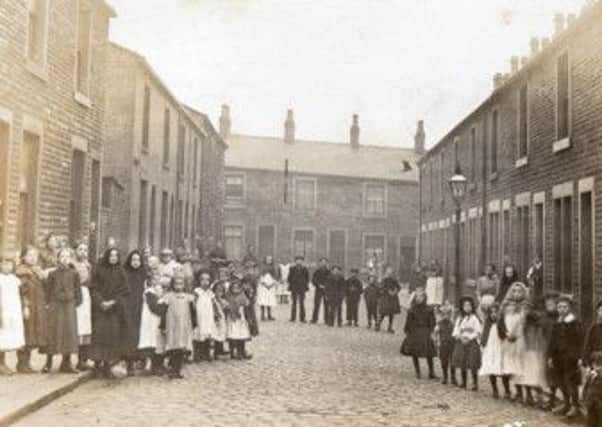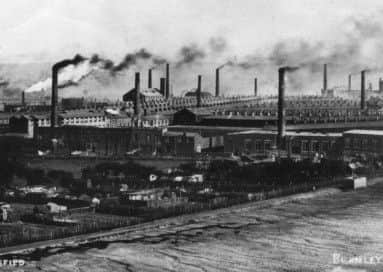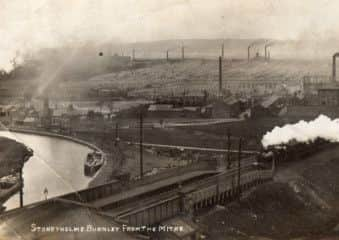Burnley’s countryside is real ‘wonder drug’


This is from an article by Ian Johnston in a recent edition of the Independent on Sunday which goes on to say that, to the outrage of experts, doctors have managed to get a requirement that they ask patients about their exercise levels removed from GP contracts, claiming it was one of a number of time-consuming, bureaucratic tasks that got in the way of treating patients.
One expert blamed “fuddy-duddy” doctors with an over-reliance on drugs, while another suggested the British Medical Association, the doctor’s union, was acting as a “block” on getting GPs to persuade their patients to adopt a less sedentary lifestyle.
Advertisement
Hide AdAdvertisement
Hide AdThe article goes on to mention the concerns of Macmillan Cancer Support, the leading charity, the chief medical officer of which described exercise as a “wonder drug”. The BMA itself, only last month in its journal, considered exercise could be considered a “viable alternative” to drugs given for conditions such as heart disease, diabetes and stroke.


An email, sent by a BMA official to every GP, trumpeted the union’s success in renegotiating the contract and removing bureaucracy. It referred to the General Practice Physical Activity Questionnaireas an example of something doctors would no longer have to do. “No more GPPAQ questionnaires”, it commented: “Asking ill patients how many hours they cook or garden: GPs can be clinicians diagnosing depression rather than ticking the box for a bio-social assessment”.
However, the doctor’s union responded to the inevitable criticism by insisting it did believe in the benefits of exercise and doctors would promote it to patients when deemed necessary. The BMA was supported by NHS England who, in a statement, said: “The benefits of exercise are not in doubt. The changes are designed to reduce overly prescriptive bureaucracy and free up time for GPs to use their judgement”.
This might seem to be reasonable, but the “Independent on Sunday” revealed that, of 180 doctors interviewed, none knew of the official guideline that people should exercise for 150 minutes a week.
Advertisement
Hide AdAdvertisement
Hide AdSimilarly, doctors are supposed to use physical activity to treat 39 diseases, but, according to Dr Richard Weiler, who specialises in sports and exercise medicine, in many cases this was not happening.


So what is the situation in Burnley? I was pleased to be able to contact Linda Searle, Burnley Council’s Healthy Lifestyles Manager, who told me all of Burnley’s medical practices and Primary Care Teams are committed to advocating the benefits of exercise. She reminded me all of them are committed to Burnley Encouragement of Exercise on Prescription and Groundwork organises free guided walks, for those who need them, throughout the year.
In fact it was only last year I helped to produce two Healthy Lifestyle walks for Linda and her team. The walks have the theme “Burnley in the Second World War” and link up sites in the town which have Second World War associations (over 80 of them) in two walks which cover, Padiham excepted, almost all the borough. There is a free leaflet, “War Time Trail: Back to the Future”, you can get from me; the town hall reception and offices of the Burnley Express.
Burnley is very fortunate that there are places in profusion for us to enjoy outdoor exercise, and we will consider some of them in this article.
Advertisement
Hide AdAdvertisement
Hide AdBut, after spending some time in the shopping centre when I was thinking about this article, I was surprised by the number of people I saw who might be described as obese.
I am not “fat talking”, abuse directed at those who could afford to lose a pound or two. This is merely an observation. We all know the number of obese children and young people has increased in recent years. In fact this applies to most age groups so I decided to do a little experiment, and this is where local history comes in.
The Briercliffe Society has thousands of images of Old Burnley and its neighbourhood. I have chosen just one of them, a photo used in the making of a postcard of Clay Street, a short street of terrace and back-to-back houses, parallel to Moorhouse Street, off Accrington Road. The site is now occupied by the recent extensions to Moorhouse’s Brewery.
I don’t know what you think but, to me, there is little evidence of obesity in this image. Starting on the left, the young girls, and their older sisters, are certainly not overweight and neither are the boys in the middle distance or the children on the right. The few adults in the picture do not look to be obese either.
Advertisement
Hide AdAdvertisement
Hide AdOf course there are many reasons for this. We are not looking at people from a wealthy district but we are looking at individuals who led active lives. The mills and mines that provided employment were only yards away and many of the children, at the time the picture was taken, would already have been working half time in the cotton industry.
Burnley Council, from its inception in 1861, understood the importance of giving people the opportunity for exercise. It might have been late coming to the provision of public parks but the council was soon talking about having recreation grounds in each district of the town.
The first of these was at Healey Heights, off Rosehill Road, which was taken, at a 14-year lease, with a yearly rental of £32.10s., in 1872. By 1891 more land had been acquired at Wood Top, Burnley Wood, Stoneyholme, Whittlefield and Lowerhouse. In 1893 Piccadilly Gardens and Briercliffe Road Gardens were created.
Two years later, Burnley Corporation acquired Fulledge Recreation Ground, the gift of Baroness O’Hagan, though the nearby Burnley Wood Recreation Ground, which had been sited near Towneley station, was closed. By the turn of the century further recreation grounds were provided at Lanehead and St Andrews.
Advertisement
Hide AdAdvertisement
Hide AdThese are only some of the recreation grounds and gardens opened by the council. Added to them we must remember Burnley acquired its first public park at Queens Park in 1893 and its second, Scott Park, in 1895. Then, in 1902, the first part of Towneley Park was opened to the public after being in the hands of the Towneley family for 500 years.
The functions of the recreation grounds, gardens and parks were many. Some of them, like the recreation grounds at Stoneyholme, Whittlefield and St Andrew’s, had football pitches almost from the beginning. They were not like the grassy areas with which we are familiar. Even I remember the ash pitch at St Andrew’s and, thanks to my grandfather, I know quite a lot about the playing conditions there and something of the accidents that were a frequent occurrence at St Andrew’s. Robert Frost organised the football matches for the Burnley Works Sports League and the Hospital Cup. St Andrews could always guarantee a good crowd and lots of matches were played there.
When Queen’s Park opened there were children’s playgrounds in the park. Two of them, one for boys and the other for girls, are shown on the OS map which was revised in 1909. However, both were above the line of the former mineral railway which went through the park. Today the single play area is below the line of the now defunct railway. There were also two bowling greens in Queen’s Park, just as there are today but the tennis court, to the south of the former Blind Pavilion, is long since gone.
Of course, the “green facilities” were not only places for children and sportsmen to play, in most of the parks there were walks designed to be quite challenging. In Scott Park, for instance, though the park was laid on hilly terrain, its designers encouraged walkers to climb to the top of the Battery.
Advertisement
Hide AdAdvertisement
Hide AdThis was a raised piece of land, at the western end of the park, initially designed to display field artillery, a common feature in public parks of the Victorian era. The idea probably came from the Royal Parks in London but, in Burnley, the guns did not arrive. However, in the early days, those who climbed to the top of the Battery had a splendid view of the Pendle countryside and, on a clear day, the exertion of getting to the top was rewarded with views of some of the peaks of the Yorkshire Dales. It is a pity that one of the great assets of Scott Park has been lost to nothing more than its own advancing maturity.
The views that could be had from this, and other recreation grounds, gardens and parks, reminds me that Burnley is surrounded by beautiful countryside which, in a forthcoming book on the Lancashire Calder, I have tried to describe. Near to home the sylvan valley of Cliviger, the mysterious “valley of the goblins” at Thursden and the charming Castle Clough in Hapton, to name but three of our beauty spots, can be found.
Further afield we have the Witch Country of Pendle Forest, the Ribble Valley and the magnificent Forest of Bowland – the place HM the Queen once said that, if she ever had to “retire”, it would be to Bowland.
Burnley people have lots of places in which to walk and run and enjoy the scenery be it a man-made park or the natural countryside. Added to this, we have the council-owned St Peter’s Centre and Padiham Pool and one of the best private leisure facilities in the country at Crow Wood.
Advertisement
Hide AdAdvertisement
Hide AdLet us hope the BMA sees sense and Burnley doctors carry on their good work and are encouraged to prescribe energetic activities, including walking, to their patients who need as much of nature’s “wonder drug” as possible.